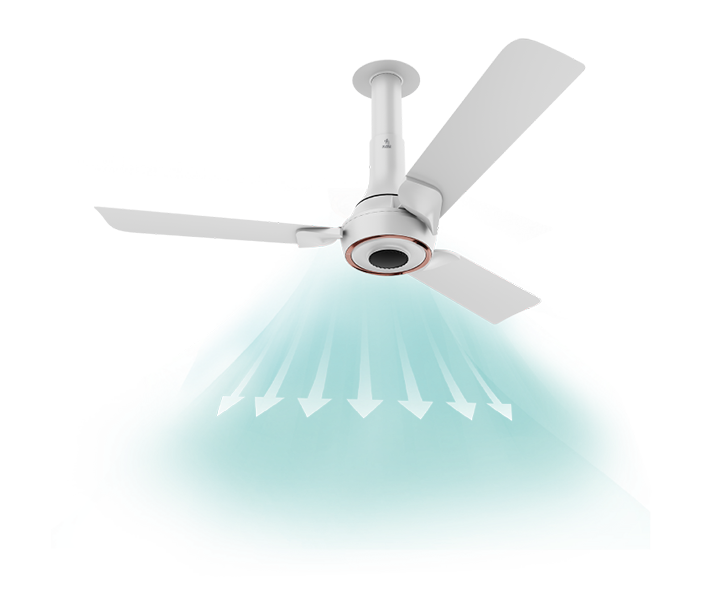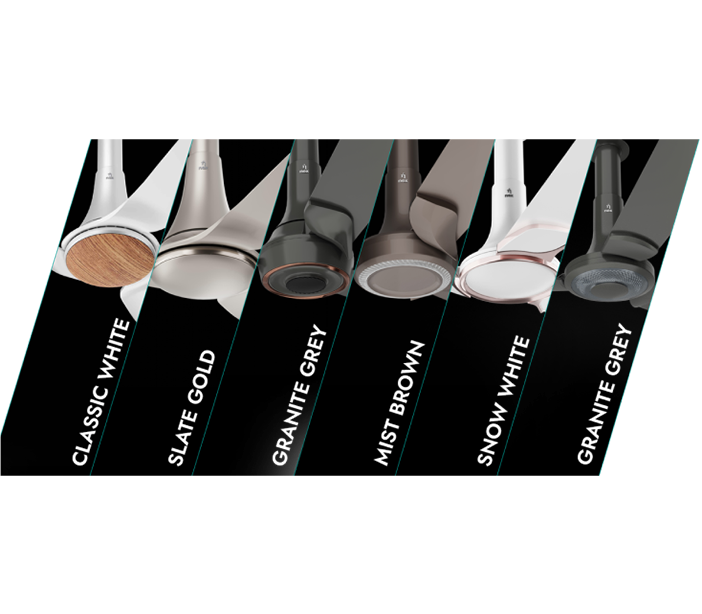High speed ceiling
fans
For the
highest comfort
Nex High speed Fans
-
High SPEED
-
PEAKTORQ™ BLDC
-
AirFluence™ Aluminium Blade
-
20% higher air thrust*
-
High SPEED
-
PEAKTORQ™ Motor
-
AirFluence™ aluminium Blade
-
20% higher air thrust*
-
High SPEED
-
PEAKTORQ™ BLDC
-
AirFluence™ Aluminium Blade
-
20% higher
air thrust*
Experience peak performance

How high-speed ceiling fans cool quicker
A ceiling fan is the most commonly used electrical appliance that helps you cool. Today, almost no room feels complete without it. However advance cooling systems become with time, a ceiling fan is irreplaceable. But, you should absolutely consider replacing your conventional ceiling fan with a super fast ceiling fan. A high-speed ceiling fan is one that rotates at higher RPMs to give maximum air flow that is well distributed across the room. This means that its cooling effect reaches wider, feels better, and reduces the need to rely on air conditioning. Most modern fan manufacturers have adopted to high-speed motors with the changing needs of the consumers. The new generation of high-speed ceiling fans have even been designed to be more power efficient than the previous generation of conventional fans. This means that you neither sacrifice on performance, nor savings.

Features to look for in a high-speed ceiling fan
When you are looking for a high RPM ceiling fan, here are a few key things to consider Motor Power: Look for fast ceiling fans with a higher torque, higher RPM, and lower power consumption. This indicates the high-speed ceiling fan’s ability to produce and maintain high performance consistently. Number of blades: lower the number of blades, lower the drag. Typically, 3-4 blades are good. Blade length: longer blades contribute to higher air flow as their throw is larger than shorter blades. However, you need to consider the room size, blade size, and motor’s power to get the best output. Motor type: Both Induction and BLDC motors are suitable. However, BLDC fans give a higher power output with higher efficiency. Warranty & Brand: A fan from a good brand that comes with a good warranty cover against issues helps you stay cooler.

Picking the right high-speed ceiling fan
Sorting a ceiling fan by price isn’t the best way to go about choosing what is perfect for your space. The primary thing to consider when picking a high-speed ceiling fan is its utility. If you have a bigger space like an office, a commercial warehouse, or a hospital, it is best if you go for an industrial ceiling fan. But, if you want one for your home, then you must consider a few more things. What are the kind of features you want to choose? A high-speed ceiling fan usually comes with a remote control for added convenience. What is the interior of your space like? The design and looks vary from fan to fan. So, picking the one that blends into your interiors needs to be considered. Finally, the budget. It is a good marker to keep in mind when picking your next fan.
still have doubts?
A high speed ceiling fan is identified by its high performance. It uses a higher horsepower motor for a powerful and even air throw. The high speed ceiling fan works at higher RPMs while maintains its power to give a cooling effect that is unparalleled.
High RPM ceiling fans usually vary widely in range as per the model and size of the fan. However, a fan is generally considered a high speed ceiling fan if its RPM is in the range of 250 – 400. Industrial fans can produce an even higher RPM.
The new age high speed ceiling fans are quite energy efficient. One of the major components that contributes to this is its motor. DC & BLDC motors give high power output while maintaining their energy efficiency. In addition, the air throw of high speed ceiling fans is more even and cools a space far better, thus, reducing the reliance on air conditioners.
- *Tested and verified by DSIR laboratory, with air thrust under the fan vs. conventional star-rated fan. *^Aerofoil ABS blades resulting in low noise vs. metal blades. *Annual savings for 4 fans. ~Yearly savings vs non-star & BEE 1-star minimum requirement, based on 16-hour daily usage at INR 7/kWh.

 Hi, I am NEXPert!
Hi, I am NEXPert!